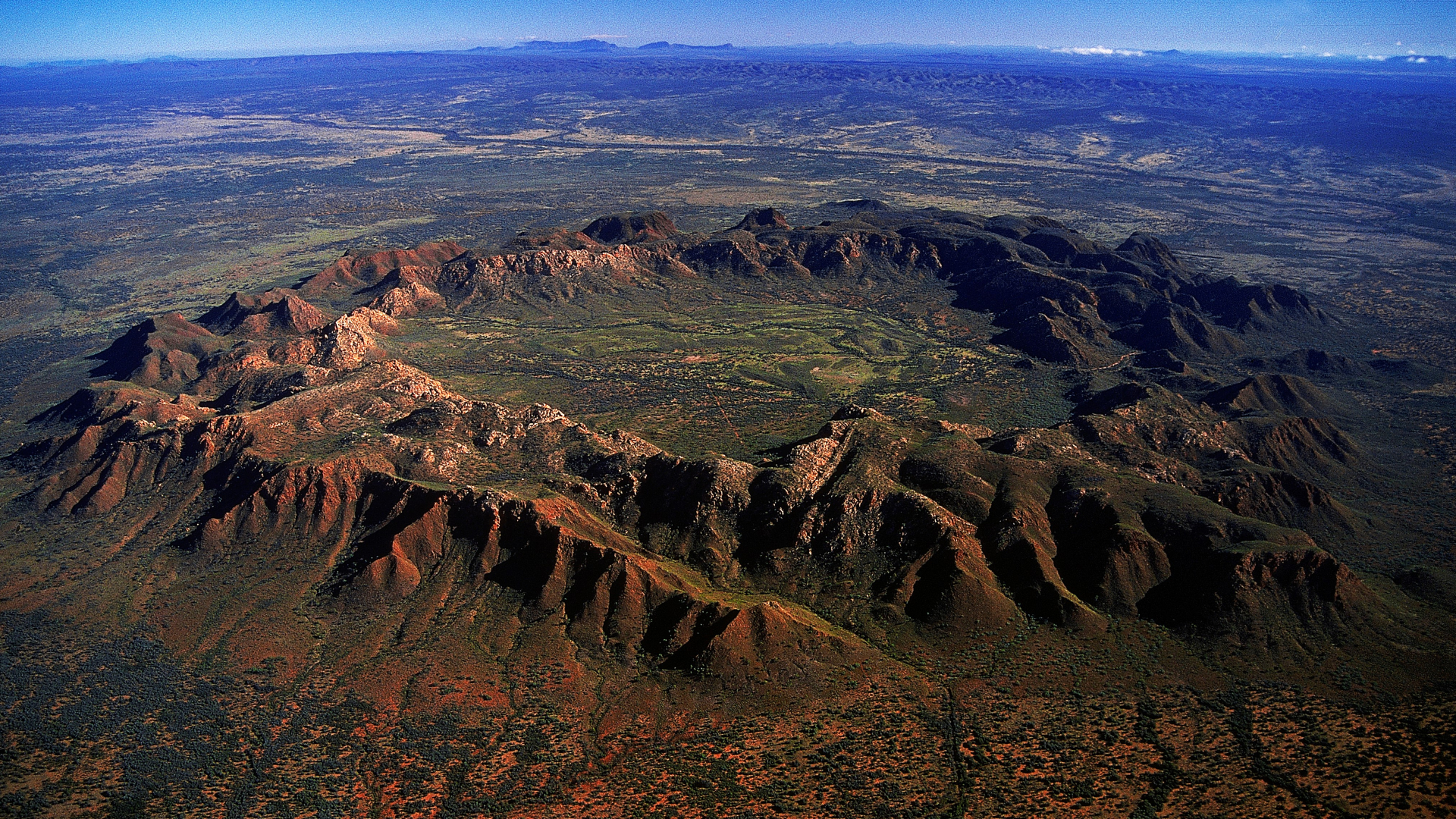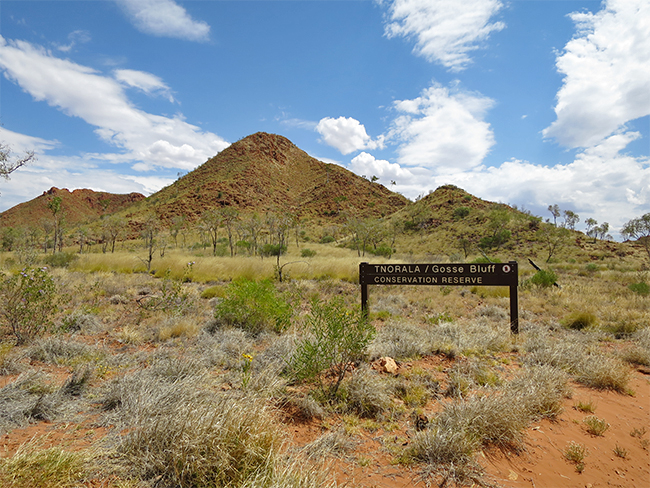
GOSSES BLUFF (TNORALA)
– Location: Northern Territory, Australia
– Diameter: Originally around 13.6 miles (22 km), now 2.7 miles (4.5 km)
– Depth: Originally 3 miles (5 km)
– Age: 142 million years
Australia is home to some of the most impressive impact craters in the world, so it comes as no surprise that we feature yet another Australian crater in this “must-see” list.
Gosses Bluff, also known as Tnorala is of great cultural and scientific importance and is the most heavily studied impact crater(opens in new tab) in Australia, according to NASA Earth Observatory. Sandwiched between the Macdonnell Range and James Range in the heart of Australia, those wishing to access the crater must respect the cultural importance of the site to the Western Arrernte Aboriginal people and obey signs stating where access is not allowed, according to the Australian Government(opens in new tab).

Scientists believe(opens in new tab) that a meteor traveling at speeds of up to 25 miles per second (40 km per second) slammed into Earth 142 million years ago, creating a giant crater nearly 14 miles (22 km) wide according to NASA Earth Observatory. While the original crater has been eroded over the years, the core of the crater, a central ring of hills almost 3 miles (4.5 km) in diameter, is still visible to this day. According to the Australian Government, the remnant crater was given the name Gosses Range by the explorer Ernest Giles in 1872. He named the crater after H Gossem, a Fellow of the Royal Society.
The Tnorala conservation reserve is a registered sacred site. As such, the Western Arrernte Aboriginal people welcome visitors to experience Tnorala but ask those visiting to exhibit respect for the area and walking on the crater rim is forbidden, according to the Australian Government.
According to the Parks and Wildlife Commission of the Northern Territory(opens in new tab), Aboriginal tellings of the crater’s origins are similar to those of scientists in that they both have celestial origins. A Western Arrernte story reveals that Tnorala was formed when a group of women danced across the sky as the Milky Way, during the dance a mother put down her baby to rest in a carrier. The carrier fell over and crashed to Earth where it became the circular rock walls of Tnorala.

Whilst the reserve is accessible all year round, travel during the cooler months (April to September) is advised. The reserve lies approximately 108 miles (175 km) from Alice Springs and access with a vehicle with four-wheel drive is recommended, according to the Parks and Wildlife Commission of the Northern Territory.









